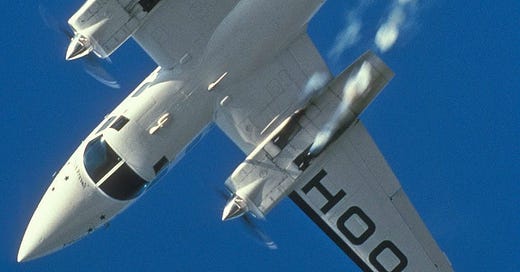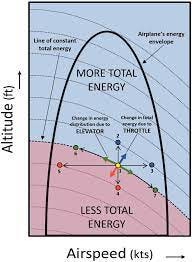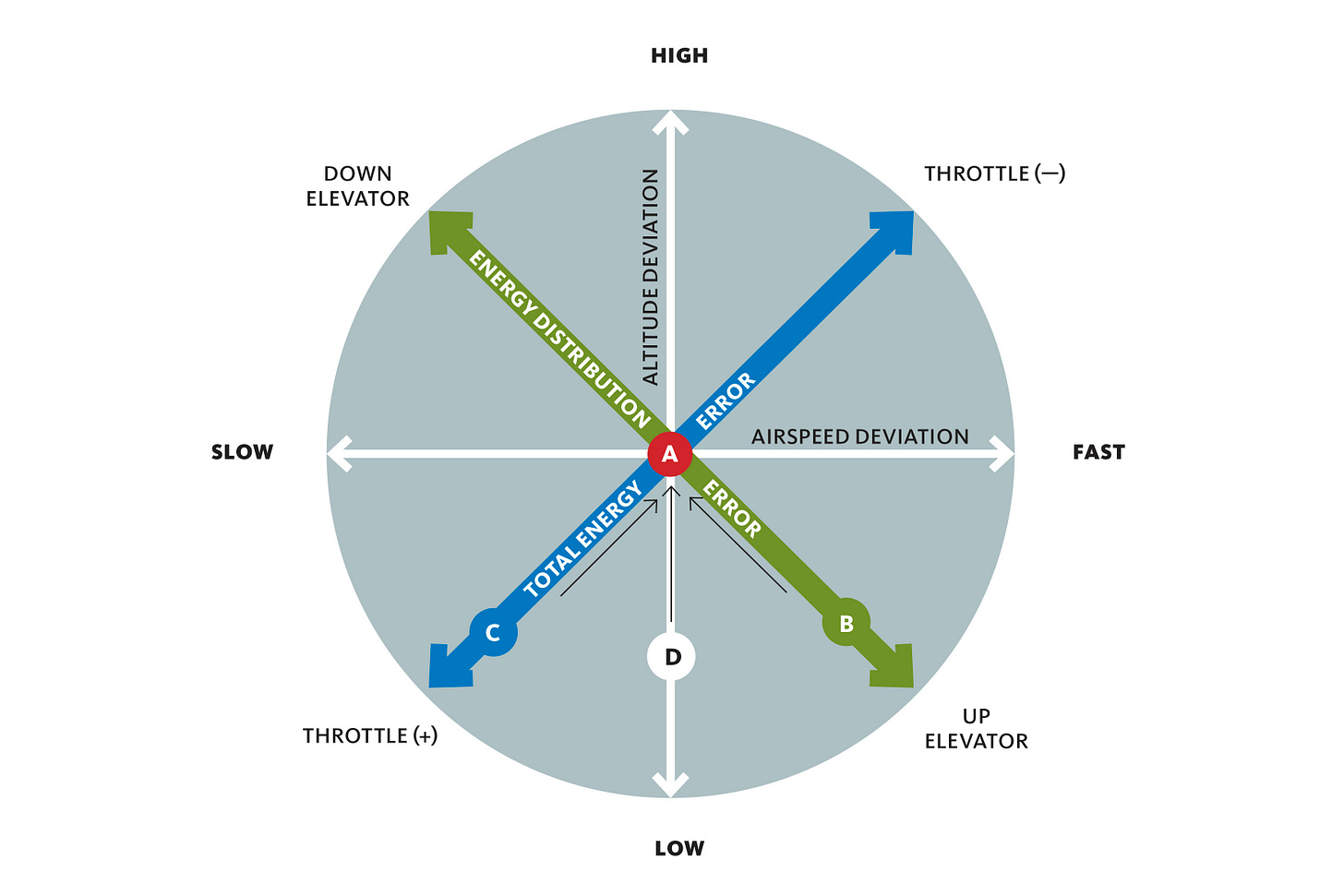Energy management has been a fundamental skill for every pilot since the dawn of flight. A pilot’s understanding of how airspeed and altitude interact is crucial to their ability to control their aircraft competently and safely.
During flight training, you are taught how the aircraft reacts when you move certain controls. Unfortunately, precise energy management theory and why such changes occur during control movements are not included in this training. This is understandable in the tight time and budget restraints of pilot training, not to mention that you are mentally saturated at that time and diving neck deep into a topic like this is not the highest priority at that point in your journey. However, energy management is a subject that is worth learning more about.
While energy management seems simple in theory, most pilots quickly realize there is a lot more to it. Assimilation is a component of human learning. We learn by comparing new topics and experiences to ones we already know. Since most pilots know how to drive before they fly, it makes sense to compare operating an aircraft to operating a car.
When we do this, we often think increasing the throttle will make the aircraft go faster, just like a car. Since this is what happens at takeoff and in straight and level flight, it must be true, right?. The answer is yes, and no. To add to the confusion, some pilots believe the throttle controls airspeed and the elevator controls altitude. Some believe the opposite, that the throttle controls altitude while the elevator controls airspeed. While others believe it depends on the phase of flight you are flying in.
Altitude, airspeed, and the energy state of your aircraft.
Airspeed, as kinetic energy, and altitude, as potential energy, combine to form the "Energy State" of your aircraft. "Energy State" is simply the amount of each type of energy that the aircraft has on hand at any given time.
In addition, airspeed and altitude are interchangeable. You can increase one by bleeding off the other and still maintain the airplane’s total mechanical energy, but it is impossible to use a single control system to adjust one without affecting the other since altitude and speed are interdependent.
Energy can not be created or destroyed, only transferred.
During your takeoff roll, energy from the engine is transferred into speed by the thrust of your propeller or jet. Once your takeoff speed has been reached, you start to transfer this energy into altitude. Once you've climbed and levelled off, this energy is converted into airspeed until the drag is equal to the thrust energy, at which point you reach your cruise speed.
Since we don’t cruise around at full power, there is often a reserve of thrust available if we need to manoeuvre the aircraft for something like a steep turn or sudden climb. We will discuss this later, but for now, we will stick to airspeed and altitude.
We have now transferred our thrust energy into airspeed and altitude. For the remainder of the flight, our aircraft is transferring energy between these two. The whole time this transfer is happening, energy is also being bled off due to drag and gravity, and the aircraft's total energy state depends on the difference between the total energy transmitted and lost.
When you have more energy than what is depleted by drag, you have an excess energy state. This extra energy can be converted into airspeed or altitude or held in reserve for later in your flight. If your drag exceeds the energy available, you are now in a low energy state. If you do not have a reserve of horsepower in your engine to use, you will need to trade altitude to gain airspeed to increase your total energy.
The throttle controls total energy; your elevator directs it.
The throttle can control how quickly energy is transferred and therefore control your aircraft's total energy. It does this by increasing or decreasing thrust. Your aircraft's total energy is a combination of available thrust and energy-depleting drag. Drag varies depending on your airspeed over time as well as your use of flaps, gear, and other drag-inducing devices your aircraft may have.
Therefore, if a manoeuvre changes the amount of drag your aircraft experiences, you start the manoeuvre with thrust. For example, if you want to climb, you add power first, then pitch up.
Your elevator does not generate or control energy; it simply transfers it to where you want it. By moving the elevator, you take forward airspeed and transfer it into altitude. The reverse is also true, such as when you level off, you are transferring your altitude back into airspeed.
When the throttle increases thrust above drag, the airplane gains total energy, and when drag is greater than thrust, the airplane loses total energy. The elevator redistributes this increase or decrease in total energy between altitude and speed. Finally, when thrust and drag are equal, such as in straight and level flight, there is a balanced total energy. This balance will remain until either the thrust-drag ratio changes or you use the elevator to transfer your energy.
The Pilots Roll
Pilots need to avoid unwanted altitude and airspeed changes and maintain the ideal energy state for every phase of flight.
These changes, or errors, come in two forms: Total Energy Errors and Energy Distribution Errors.
Energy distribution errors are corrected by transferring energy between altitude and airspeed using the elevator, while total energy errors are corrected by increasing or lowering energy using the throttle.
During a Total Energy Error, the aircraft has either too much or not enough, energy. When this happens, altitude and airspeed shift in the same direction. In a low energy error, the aircraft is at a low altitude with low airspeed. In a high energy error, altitude is high, but so is airspeed.
In Energy Distribution Errors the aircraft has balanced total energy, but its distribution is incorrect. During these errors, altitude and speed change in opposite directions, either high altitude and slow speed or low altitude and high speed.
Regardless of the situation, it is up to you, the pilot, to identify and properly correct any errors. Becoming proficient in energy management will not only allow you to operate your aircraft more efficiently, but it will also make you a safer pilot.
To get a sense of how all of this comes together, below is a video of the master of energy management, Bob Hoover, performing one of his aerobatic routines. Bob Hoover is a legend in the aviation industry, and the story of his career, and in particular his energy management, is amazing.
Bob Hoover -- Engine-out Aerobatics!
If you are interested in learning more about energy management, the FAA's Airplane Flying Handbook (FAA-H-8083-3C) Chapter 4: Energy Management: Mastering Altitude and Airspeed Control goes into a very deep dive on the subject.
FLY SAFE








